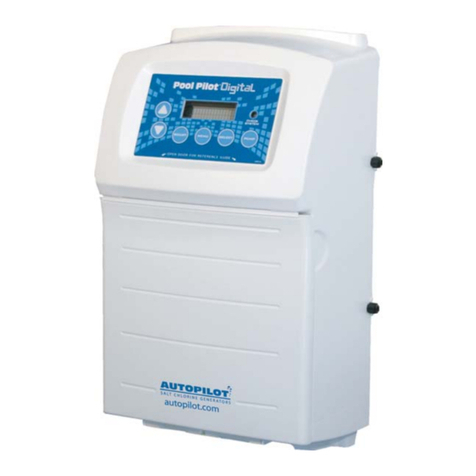
i
TABLE OF CONTENTS
SECTION 1 - FACTORY CONTACT INFORMATION...........................................................................................1
SECTION 2 - SAFETY INFORMATION ................................................................................................................1
SECTION 3 - OWNER QUICK START & RUN.....................................................................................................3
3.1 How Your Digital Nano/Nano+Works ............................................................................................................3
3.2 Control Overview ............................................................................................................................................4
3.2.1 Up and Down Arrows...................................................................................................................4
3.2.2 The Boost Button ......................................................................................................................... 4
3.2.3 Menu and Select Button...............................................................................................................4
3.2.4 Check System Light and Audio Alarm .........................................................................................4
3.3 Normal Display................................................................................................................................................5
3.4 Water Balance & Chemistry Recommendations ............................................................................................5
SECTION 4 - SPECIFICATION AND APPROVALS.............................................................................................6
4.1 Specifications..................................................................................................................................................6
4.2 Manifold Pressure Drop Versus Flow .............................................................................................................6
4.3 Agency Approvals...........................................................................................................................................6
SECTION 5 - FEATURES......................................................................................................................................7
5.1 Patented Temperature Compensation............................................................................................................7
5.2 Water Manifolds Assemblies - Available Options...........................................................................................7
5.2.1 Automatic-Flow Bypass Manifold Assembly (#94105 and #94106) ............................................8
5.2.2 CoPilot Manifold Assembly.......................................................................................................... 8
SECTION 6 - MAINTENANCE...............................................................................................................................9
6.1 Fuse Location and Ratings.............................................................................................................................9
6.2 Removing / Inspecting / Cleaning Tri-Sensor...............................................................................................10
6.2.1 Tri-Sensor Assembly Overview..................................................................................................10
6.2.2 Inspect Tri-Sensor......................................................................................................................10
6.2.3 Cleaning Tri-Sensor...................................................................................................................11
6.2.4 Test Tri-Sensor Flow Switch......................................................................................................11
6.3 Servicing the Cell..........................................................................................................................................12
6.3.1 Removal.....................................................................................................................................12
6.3.2 Visual Inspection........................................................................................................................12
6.3.3 Manual Cleaning........................................................................................................................13
6.3.4 Installing.....................................................................................................................................13
6.4 Winterizing ....................................................................................................................................................14
6.5 Spring Start-up..............................................................................................................................................14
SECTION 7 -PROGRAMMING...........................................................................................................................15
7.1 Control Panel................................................................................................................................................15
7.1.1 Button Overview.........................................................................................................................15
7.1.2 Menu Button...............................................................................................................................15
7.1.3 Display Overview .......................................................................................................................15
7.2 Menus ...........................................................................................................................................................16
7.3 Basic Operational Programming...................................................................................................................16
7.3.1 Adjusting the Chlorine Output %................................................................................................16
7.3.2 Boost or Super Boost.................................................................................................................17
7.3.3 Chlorine Mode............................................................................................................................17
7.3.4 Chlorine % Adjustment Procedure.............................................................................................17
7.4 Test Pool Pilot (Diagnostic Menu) ................................................................................................................18
7.5 View Setup....................................................................................................................................................18





























